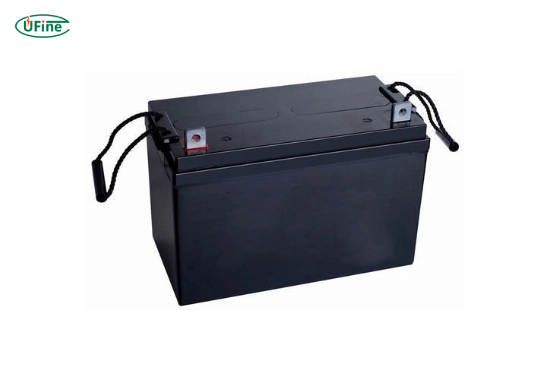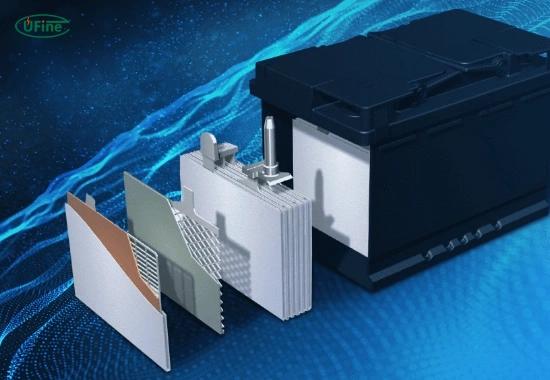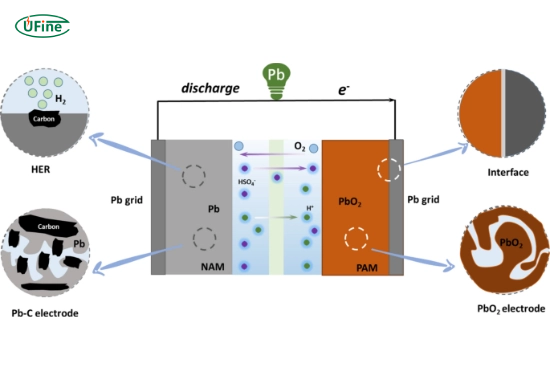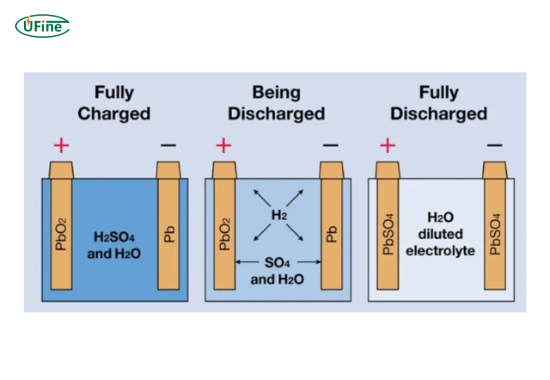When it comes to energy storage solutions, understanding the differences between Lead-Carbon Batteries and AGM (Absorbent Glass Mat) Batteries is essential for making informed decisions. Both types of batteries have unique characteristics that cater to various applications, but they also have advantages and disadvantages. In this article, we will delve deep into the specifics of each battery type, compare their performance metrics, and help you determine which one is right for your needs.
Part 1. What is a lead carbon battery?
Lead Carbon Batteries represent an innovative evolution in lead-acid technology. By integrating carbon materials into the battery’s electrodes, these batteries enhance performance and longevity compared to traditional lead-acid batteries.
Key Features of Lead Carbon Batteries
- Enhanced Cycle Life: Lead Carbon Batteries can last significantly longer than conventional lead-acid batteries, often exceeding 2000 cycles under optimal conditions. This makes them ideal for applications requiring frequent charging and discharging.
- Faster Charging: These batteries can be charged in a fraction of the time compared to standard lead-acid batteries. For instance, they can reach 80% charge in just a few hours, making them suitable for systems that require quick energy replenishment.
- Improved Efficiency: Introducing carbon enhances the electrochemical reactions within the battery, leading to better energy conversion and reduced energy loss during charging and discharging.
- Lower Self-Discharge Rate: With a rate of around 3-5% per month, Lead Carbon Batteries retain their charge longer when not in use, making them ideal for seasonal applications.
Applications for lead carbon batteries
Lead Carbon Batteries are particularly well-suited for various applications:
- Renewable Energy Systems: Their fast charging capabilities make them ideal for solar power storage solutions where quick energy replenishment is essential.
- Electric Vehicles (EVs): The longer cycle life and efficiency at partial states of charge make them suitable for electric vehicles that require frequent recharging.
- Telecommunications Backup Power: Their ability to handle deep cycles makes them an excellent choice for backup power systems in telecommunications.
Part 2. What is an AGM battery?
AGM Batteries are sealed lead-acid batteries that use absorbent glass mats to hold the electrolyte. This design not only enhances safety but also improves performance across various applications.
Key Features of AGM Batteries
- Maintenance-Free Operation: AGM Batteries are sealed, eliminating the need for regular maintenance such as checking water levels or cleaning terminals. This feature makes them particularly user-friendly.
- Vibration Resistance: Their robust construction allows AGM Batteries to withstand vibrations and shocks, making them suitable for automotive and marine environments where reliability is crucial.
- Low Internal Resistance: With internal resistance often below 5 milliohms, AGM Batteries can deliver high discharge rates, making them ideal for applications that require bursts of power, such as starting engines.
- Environmental Safety: Sealing prevents acid spills and gas emissions, contributing to a safer working environment. They also have a lower thermal runaway risk than flooded lead-acid batteries.
Applications for AGM batteries
AGM Batteries find extensive use across multiple sectors:
- Automotive Applications: Their high discharge rates make them perfect for starting engines and powering electrical systems in vehicles.
- Uninterruptible Power Supplies (UPS): AGM batteries are maintenance-free, making them ideal for UPS systems that require reliable backup power without user intervention.
- Marine Applications: Their vibration resistance and safety features make them suitable for use in boats and other marine environments where reliability is crucial.
Part 3. How do lead carbon batteries work?
Lead Carbon Batteries operate on the same principles as traditional lead-acid batteries but incorporate carbon materials in their electrodes. The carbon helps facilitate the electrochemical reactions that occur during charging and discharging.
The Electrochemical Process
- Charging Phase: During charging, lead sulfate crystals form on the positive plate while hydrogen ions accumulate on the negative plate.
- Discharging Phase: When discharging, these reactions reverse, allowing electrons to flow from the negative plate to the positive plate through an external circuit, providing power.
- Role of Carbon: The carbon additive helps reduce sulfation—a common issue in lead-acid batteries—thus enhancing cycle life and efficiency.
Part 4. How do AGM batteries work?
AGM Batteries utilize a similar electrochemical process as traditional lead-acid batteries but significantly differ in construction. The electrolyte is absorbed into glass mats, allowing for a more efficient reaction.
The Electrochemical Process
- Charging Phase: When charged, lead sulfate forms on both plates, similar to traditional batteries.
- Discharging Phase: The chemical reactions during discharging allow energy release as electrons flow through an external circuit.
- Absorbent Glass Mat Role: The glass mats hold the electrolyte in place, preventing spills and allowing for effective ion transfer between plates.
Part 5. Comparing lead carbon and AGM batteries
To make an informed choice between Lead Carbon and AGM Batteries, it’s essential to understand their differences in performance metrics, lifespan, charging capabilities, and suitability for various applications.
Performance Metrics Comparison
| Feature | Lead Carbon Battery | AGM Battery |
| Cycle Life | Up to 2000+ cycles | Typically 500-1000 cycles |
| Charge Time | 80% charge in 2-4 hours | Full charge in 4-6 hours |
| Self-Discharge Rate | 3-5% per month | 4-6% per month |
| Operating Temperature Range | -20°C to 50°C | -20°C to 60°C |
| Weight | Heavier due to carbon content | Lighter due to design |
| Cost | Higher initial investment | Moderate initial investment |
In-depth Analysis
- Cycle Life: Lead Carbon Batteries significantly outperform AGM Batteries regarding cycle life. With over twice the lifespan under similar conditions, they are more cost-effective in the long run despite their higher initial cost.
- Charging Capabilities: Lead carbon batteries’ rapid charging feature makes them particularly advantageous for renewable energy systems like solar power setups, where downtime must be minimized. In contrast, while AGM Batteries offer decent charging times, they typically take longer to reach total capacity.
- Self-Discharge Rates: Both battery types exhibit low self-discharge rates; however, Lead Carbon Batteries have a slight edge here, allowing them to retain charge more effectively during periods of inactivity.
- Temperature Tolerance: AGM Batteries can operate effectively at slightly higher temperatures than Lead-Carbon Batteries, making them suitable for environments where heat is a factor.
- Weight Considerations: AGM batteries are generally lighter than lead-carbon batteries due to their design and materials. This can be a significant factor in applications where weight is critical, such as portable devices or vehicles.
Part 6. FAQs
-
What is the lifespan of a lead carbon battery?
Lead Carbon Batteries typically last over 2000 cycles under optimal conditions, offering superior longevity compared to standard lead-acid options. -
Are AGM batteries better than lead carbon batteries?
It depends on your specific needs; AGM batteries excel in automotive applications, while lead-carbon batteries perform better in renewable energy systems due to their longer cycle life. -
Can I use a lead carbon battery in my car?
While possible, it’s essential to ensure compatibility with your vehicle’s electrical system before using a lead carbon battery. -
Do AGM batteries require maintenance?
AGM batteries are maintenance-free and do not need regular checks or water additions like traditional flooded batteries. -
Which battery is more environmentally friendly?
Both types have environmental advantages; however, due to their sealed design, AGM batteries generally have a lower risk of leaks.
Related Tags:
More Articles
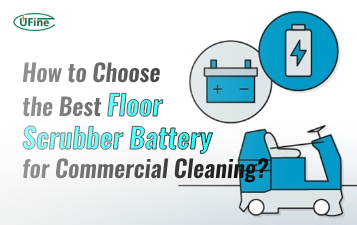
How to Choose the Best Floor Scrubber Battery for Commercial Cleaning?
Selecting the ideal floor scrubber battery ensures a long runtime, rapid charging, and minimal maintenance for efficient commercial cleaning operations.
Battery for Blower vs Battery for Leaf Vacuum: Which One Should You Choose?
Battery for blower vs leaf vacuum—learn the key differences in power, fit, and runtime to choose the right battery for your outdoor tool needs.
How to Choose the Right Battery for Blower?
Choosing the right blower battery? Consider voltage, capacity, chemistry & usage. This guide helps match the best battery for peak performance.
How to Choose the Best Insulated Battery Box for Lithium Batteries?
Choosing the Best Insulated Battery Box for Lithium Batteries? Discover key factors such as size, material, and safety for optimal protection and performance.
7 Critical Elements on a Lithium Battery Shipping Label
What must be on a lithium battery shipping label? Learn 7 key elements to ensure safety, legal compliance, and correct handling across all transport modes.
